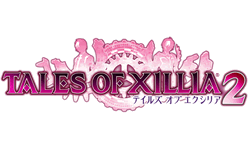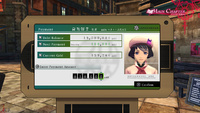|
|

|
PLATFORM
|
PS3
|
BATTLE SYSTEM
|

|
INTERACTION
|

|
ORIGINALITY
|

|
STORY
|

|
MUSIC & SOUND
|

|
VISUALS
|

|
CHALLENGE
|
Adjustable
|
COMPLETION TIME
|
40-60 Hours
|
|
OVERALL

|
+ Returning Xillia cast are still terrific
- Plotline is absurd and self-contradictory
- Ridiculous amount of recycled content
- Hardly any new content
- Bad pacing and story structure
+ ONE HUNDRED CATS!!!
|
Click here for scoring definitions
|
|
|
There's nothing quite as cynical in the gaming world as the quick cash-in sequel. That isn't to say that all sequels are bad — far from it, a carefully crafted sequel, unlike in the film industry, can often be better than its predecessor thanks to improvements and refinements to the formula. But those are true sequels. The cynical ones, the ones that deserve the ire of all gamers, are the ones that don't bother with design improvements, the ones that simply take an old game, hack in a new story, and leave it at that. These are the games that reuse locations, character models, whatever the developers can get away with, all in an effort to cut costs and milk a few more pennies out of the consumer. Tales of Xillia 2 is one of these games in the worst kind of way. With hardly any new content and an absurd, often contradictory storyline that feels like little more than an excuse to bring the gang back together, it is not the sequel Tales of Xillia fans deserve.
Tales of Xilla 2 takes place a year after the first game, and follows the exploits of Ludger Kresnik, an Elympion cafeteria chef with high hopes of becoming an agent in the Spirius Corporation's dubious paramilitary force. After a series of unlikely incidents, he winds up as a caretaker for a young girl named Elle, gets saddled with a twenty million gald medical bill, and discovers that his lineage allows him to control a Power Rangers-esque transformation. He can use this power to seek out and destroy "fractured dimensions," worlds where the events of history have played out slightly differently from the world he knows. Of course, these events also lead him to befriending the entire cast of Tales of Xillia.
For a game purported to have a very dark storyline, the events of the game generally feel sillier than any other entries in the series. The nature of the fractured dimensions constantly changes to suit the needs of the story, and the game's pacing is haphazard and irritating, with main story chapters being forcibly separated by required debt repayments. The best aspects of the story stem from seeing where the original cast is one year later, while Ludger and Elle's tale feels more like an excuse to bring them all back together again. That said, Elle at least manages to be an interesting character, playing the role of an actual child rather than a super-powered prodigy like most Tales children. The same, sadly, can't be said for Ludger.
Unlike every other Tales game (apart from the abysmal Tales of the World), Ludger is, for the most part, a silent protagonist, whose few words and decisions are determined by the player. He does have the occasional line of dialogue, but it's usually limited to awkward, one or two-word sentences. Anything else he says is chosen from two options by the player, but sadly these choices have virtually no effect on the outcome of the game, with the exception of a small handful in the final few chapters, which makes the whole concept seem particularly hollow. In the few situations where it seems like a choice could lead to an interesting divergence in the story, the decision is usually out of the player's hands. Players can decide to do one thing, or they can decide to do another thing, at which point the game will force the player down the first path anyways, often in the most heavy-handed of ways.
 Leia has a hat! Jude has a lab coat! Hurray for fashion!
Leia has a hat! Jude has a lab coat! Hurray for fashion!
|
|
Xillia 2's biggest flaw lies in how it's structured. Unlike most Tales games, in which the main plot constantly moves forward as players move from area to area, Tales of Xillia 2 takes a chapter-based structure which simply doesn't work. Each chapter involves a relatively small chunk of story that can be completed in fifteen to twenty minutes, after which a few new areas are unlocked to visit and explore, and the game enters a closed state until Ludger makes another payment on his twenty million gald debt. Ludger's personal loan shark Nova will constantly call to remind him of this fact. In these interim periods, players can also complete Character Quests for the original Xillia characters in their party, but these are usually even shorter than the main chapters, and in some cases amount to nothing more than a brief cutscene. Each character has his or her own unique story arc, and these are probably the most enjoyable aspects of the new story.
For the rest of the game, which is to say the vast majority of it, players will be completing job requests, which, with some exceptions, amount to nothing more than bland kill and fetch quests. A few requests actually tie into the story or into character quests, but these are few and far between. The main purpose of these quests is to collect gald, which can be used to pay back some more of Ludger's massive loan so he can move on with the plot. Because of this structure, the game feels very disjointed. There's very little reason to properly explore the new areas players can visit, as there's no plot-related reason to do so. The number of new areas in the game is pathetically small, amounting to three new towns, a handful of field areas, and a few storyline-related dungeons, most of which players will be able to visit only once and never again.
The combat system, at least, is still fantastic. It hasn't changed a great deal from Tales of Xillia, but that isn't a bad thing. What few changes have been made actually manage to enhance it rather than subtract from it, which is quite surprising given how good it was in the first place. The most prominent change is that elemental strengths and weaknesses play a much larger role, adding in an extra layer of strategic depth. Ludger, in particular, has the unique ability to switch between three different types of weapons, which allows him to more easily abuse this system. Ludger also possesses the ability to use his transformation power, which grants him a brief period of invulnerability in which to attack a target. Beyond that, the combat remains very much the same. Players returning from Xillia will have no trouble jumping right in, and those who haven't played the original should probably stay away anyways; there's absolutely no reason to play Xillia 2 without having previously played the first, especially since it's a much better game overall.
 Expect to hear from her a lot, whether you like it or not.
Expect to hear from her a lot, whether you like it or not.
|
|
The method by which characters learn new skills has also changed drastically, but the new system is actually shockingly good, far better than the Lilium Orb from Tales of Xillia. Each character can equip one of a wide array of Allium Orbs, each of which contains the traits of a particular element. As characters fight, they will gain experience in whatever element their orb possesses, learning new skills and artes in the process. Some require experience in multiple elements, so players will have to switch them out fairly consistently in order to balance their characters. Interestingly, characters have access to a much more diverse array of skills and artes than in the original game. In particular, every character possesses some sort of healing ability, which makes nearly every possible party combination a viable option.
Visually, the game has neither improved nor degraded, though it was hardly a visual masterpiece to begin with. Many of the areas from the previous game, such as the town of Fennmont, are still quite beautiful, but as the game begins in the extremely bland city of Trigleph and opens with an ugly, uninteresting cave, it really doesn't make for a strong first impression. The vast majority of the visuals are recycled from Tales of Xillia. The music, unsurprisingly, is also largely recycled. Some of the new tracks are in the jazzy style heard in the latter half of Tales of Xillia, which is a good thing, but there are also a number of incredibly out-of-place rock anthems that dredge up memories of Star Ocean: Till the End of Time's incredibly disjointed soundtrack. The voicework, at least, is generally quite solid, with the exception of Ludger's weird, one or two-word outbursts, which just feel off-putting most of the time.
It's ironic, really, that one of the key elements of Tales of Xillia 2's plot is worlds in which history played out differently. Perhaps in a different world, Tales of Xillia 2 could have been the proper sequel that Tales fans wanted, one that more thoroughly explored the Elympios half of the world which was mostly glossed over in the first game. Instead, we got a game in which players collect cats and pay off their medical bills.
Review Archives
|









